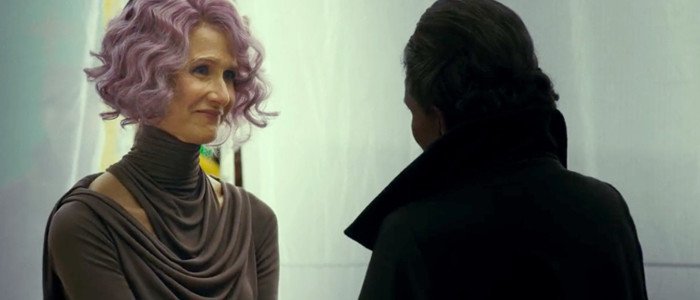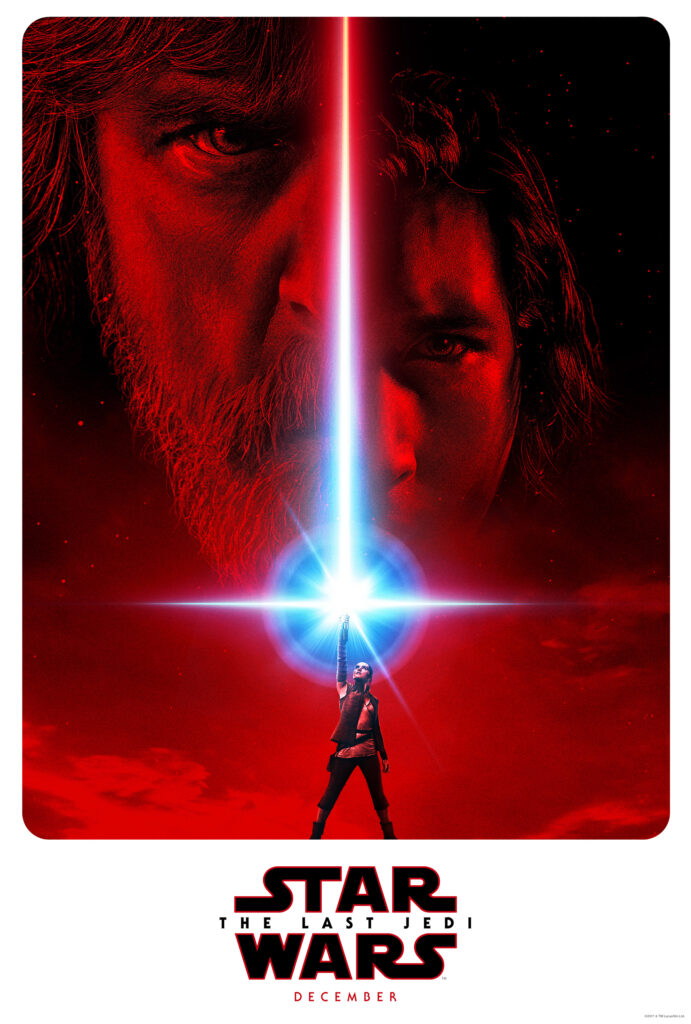[NOTE: This isn’t spoiler heavy, but if you still haven’t seen “The Last Jedi” and you want to go in cold Porg-y, er… turkey, you should bookmark this for later. Also, what are you waiting for? Go see it already!]
“Star Wars Episode VIII: The Last Jedi”, the most anticipated movie of the year (and then some), has finally come out and now critics and fans can scrutinize each and every individual moment for decades to come. But besides who Force-choked who and which CGI creature will be the hottest new toy, “The Last Jedi” answered a more technical question for film buffs—what did Episode VIII do to build on Episode VII?
While “Star Wars Episode VII: The Force Awakens” isn’t really an original movie in itself—in fact it’s the (obviously) seventh movie in the series—it did hit a reset button for Star Wars in numerous ways. So it’s easy to see how “The Last Jedi” is a direct sequel to “The Force Awakens” more than it is the eighth movie in the Skywalker Saga.
And sequels normally get a bad rap, though “The Last Jedi” is in good company considering “The Empire Strikes Back”—another middle chapter in a Star Wars trilogy—is considered by many to be the greatest sequel of all time.
So how, from a filmmaking perspective, did “The Last Jedi” build on “The Force Awakens?” Here’s just a few, broad examples:
Production Design
Hollywood titan J.J. Abrams was lauded for his direction in Episode VII—namely because he responded to the artificial looking CGI-heavy prequels by bringing grit and texture back to Star Wars. A full, beat-up Millennium Falcon was built for the movie, which was shot often on location and fully built sets as opposed to large swaths of green screen. This dirtier, rougher version of space is kept in the look of “The Last Jedi”—whether on Luke’s isolated island or the remote planet covered in dusty red salt. If you can feel an image you’re really only seeing, the filmmakers are doing their job.
Film Score
It’s pretty much a given that any new Star Wars film needs to retain the iconic themes John Williams first wrote in the 1970s, but to stand out on their own these movies should offer new melodies we’ll be able to hum to. “The Force Awakens” introduced us to “Rey’s Theme” as well as “Kylo Ren’s Theme”, strong motifs that hold up alongside classics like the “Imperial March” and the “Binary Sunset/Force Theme.” “The Last Jedi” is a little scarce on completely new soundtrack entries—though it does have a motif for new character Rose—but it recalls the best music of “The Force Awakens” throughout, using it in several powerful scenes between Rey and Kylo Ren. As the story progresses so does their relationship, and the mixture of their themes accentuate this narrative.
Screenplay – The Story
One of the criticisms of “The Force Awakens” was that it imitated the original trilogy too much, failing to set itself apart. However, a benefit from this was that it created a broader simple story of heroes vs. villains that “The Last Jedi” could then develop and subvert. Now that the audience is familiar with the characters, screenwriter and director Rian Johnson was more free to complicate the narrative, jumping around between solar systems and even including flashbacks, a cinematic technique that’s rare for the Star Wars series. Like famous sequels before it, including “The Empire Strikes Back” and “The Godfather Part II,” a more complicated story gives more thematic weight and allows for more emotional nuance for the audience.
Screenplay – The Characters
The narrative wasn’t the only thing complicated in this sequel. Now that Episode XII allowed us to know the new characters in the series, we can find out more about them in more subtle ways. Rey was a mysterious loner who discovered enormous power in “The Force Awakens”; here, she learns how to grapple with such power and we see how shaped she is by never knowing her parents. Kylo’s internal conflict is made more real and evolves from broad angst to a scared child who thought his uncle was going to kill him in his sleep—that would mess anyone up! Even more minor characters, like Supreme Leader Snoke, benefit from the foundation “The Force Awakens” built. In the previous film, Snoke was quickly painted in a hologram as an ominous villain. In “The Last Jedi,” we see just how overwhelming his power in the Dark Side of the Force can be, as well as his knowledge of and hatred for original trilogy protagonist Luke Skywalker. By inferring more backstory, it places characters like Snoke more firmly in the world and makes their actions more palpable and believable.
Casting
“The Force Awakens” was notable in its diverse casting—bringing more women and minorities to a genre of filmmaking historically dominated by white men. “The Last Jedi” continues this tradition by introducing the characters of Rose & Paige Tico, played by Vietnamese-American actress Kelly Marie Tran and Vietnamese actress Ngô Thanh Vân, respectively. It also introduces Vice Admiral Holdo, a complex leader of the Resistance played by Academy Award nominated actress Laura Dern. Seeing Laura Dern and the late Carrie Fisher—two women over 50—play powerful leaders making heroic wartime decisions—is something rarely seen in Hollywood blockbusters, but something that needs to be seen more and more if cinema is to remain culturally relevant. If the upcoming, untitled Episode IX wants to retain its worldwide audience, it needs to continue this tradition of casting people and faces from every corner of the globe.


